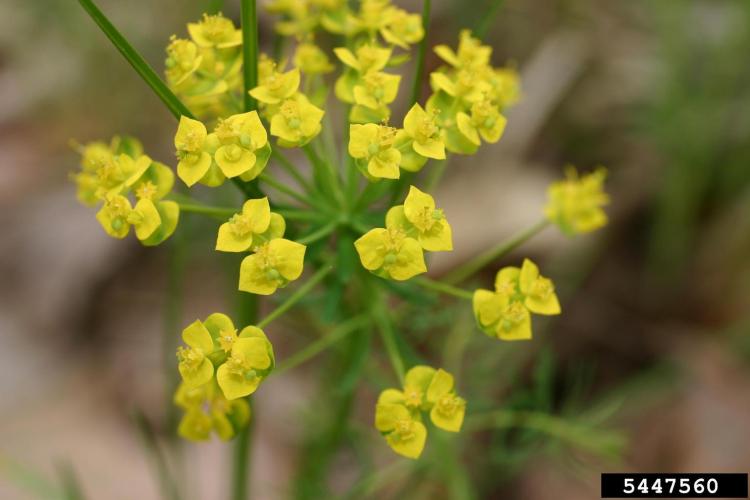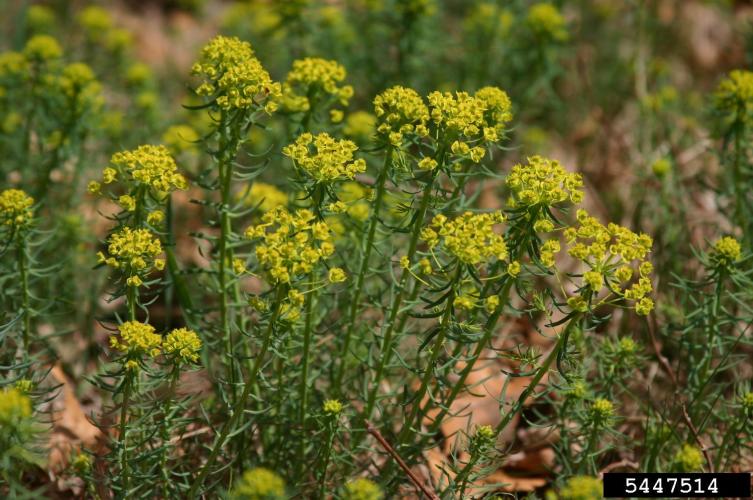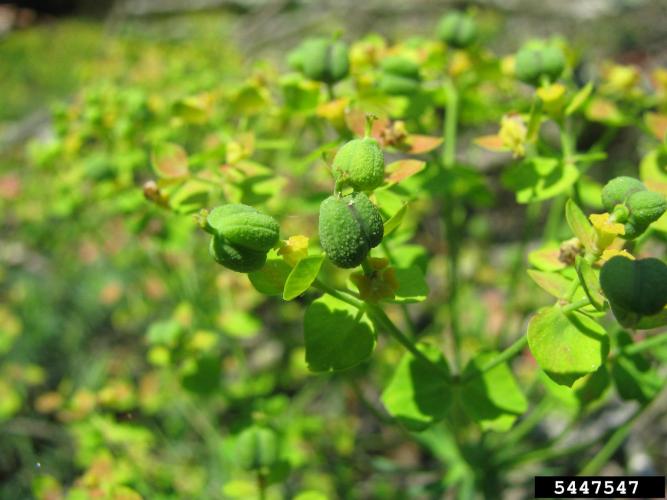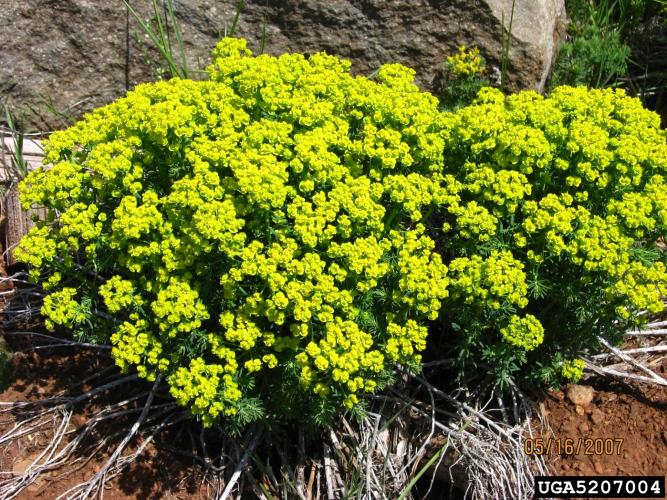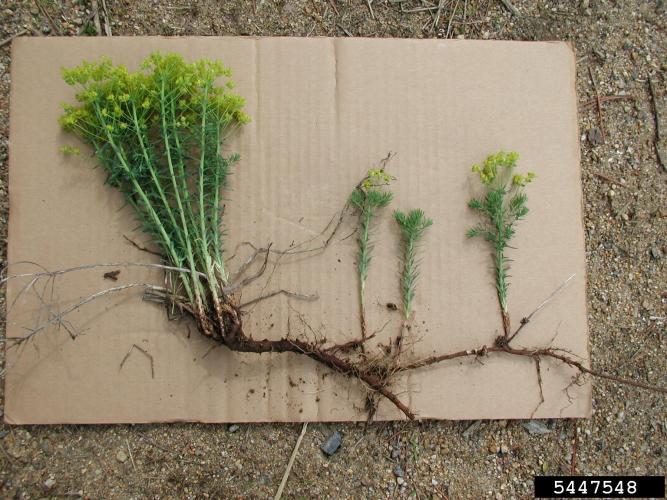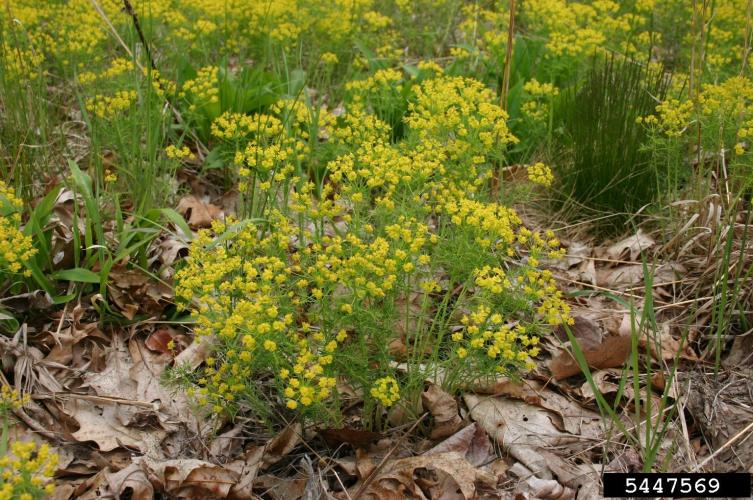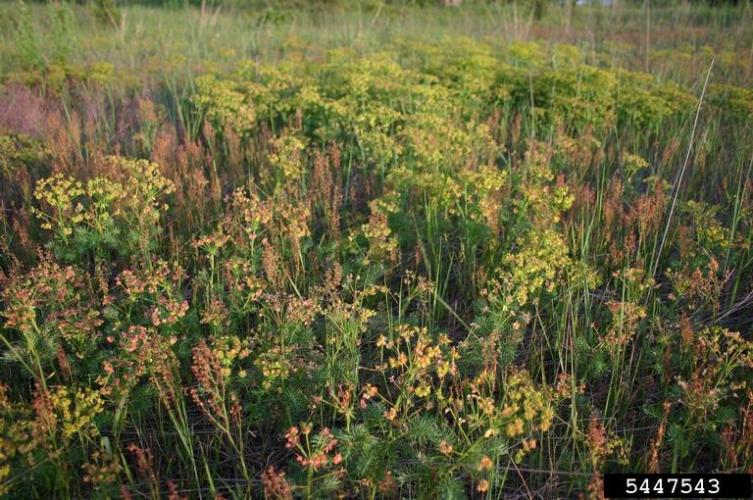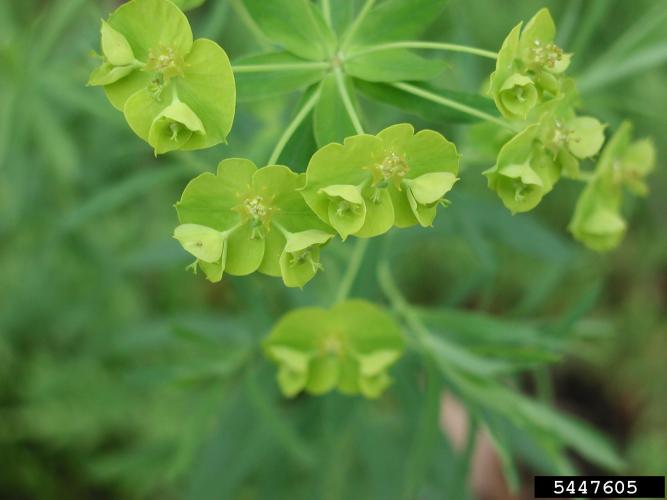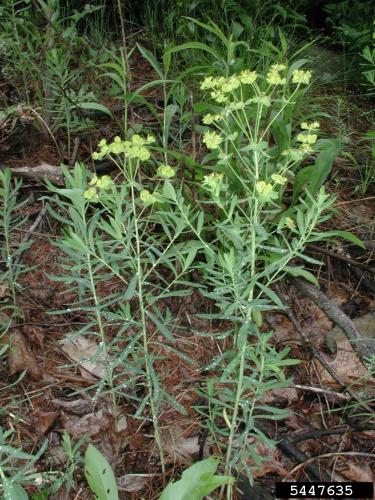Cypress spurge
Identification
Appearance
Euphorbia cyparissias grows up to 12 inches tall. This herbaceous, perennial plant invades open disturbed areas throughout the United States. All parts of the plant exude a white, milky sap when broken.
Foliage
The leaves are small, up to 1 inch long. The leaves are numerous, alternate or whorled, bright green, and linear in shape.
Flowers
Yellow-green, inconspicuous flowers are in a cyme at the top of the plant. Flowers mature to red.
Fruit
The fruit is three-lobed and contains 1-3 egg shaped smooth gray seeds that measure 0.06-0.08 in. Euphorbia cyparissias produces large clonal colonies through an extensive underground root system, that allows this plant to reproduce with lateral root buds.
Biology
This is considered a watch list species.
Origin
Native to Eurasia
Habitat
Abandoned Field, Agricultural Field, Edge, Open Disturbed Area, Pasture, Railroad Right-of-Way, Roadside, Utility Right-of-Way, Vacant Lot, Yard or Garden. Euphorbia cyparissias is most often found in old fields and natural grasslands.
Life cycle
Plants overwinter as seed or root and crown tissue. Over-wintering buds develop on the indeterminate roots. New shoots emerge, and seeds germinate, each spring soon after the snow cover melts. Flowering begins the first or second week of May. Seeds may mature as early as the third week in June. A second flowering often occurs in late summer or early fall.
Ecological Threat
Euphorbia cyparissias can invade open disturbed areas such as fields, pastures, agricultural land, roadsides, and yards. It is toxic to livestock so infestations reduce the forage value of pastures and contaminates hayfields. The white, milky sap can be irritating to skin and should be avoided. It can form huge infestations displacing native vegetation. This plant is native to Europe and western Asia. It was first introduced into the United States in the mid-1800s as an ornamental.
Vermont Distribution
Citations
Photo Credit
5447543, 5447548, 5447560, 5447547, 5447605, 5447635, 5447414, 5447569, Leslie J. Mehrhoff, University of Connecticut, Bugwood.org
5207004, Todd Pfeiffer, Klamath County Weed Control, Bugwood.org
Leslie J. Mehrhoff, University of Connecticut, Bugwood.org
Information Credit
Go Botany, Euphorbia cyparissias
Invasive Plant Atlas of New England
Colorado Weed Management Association
